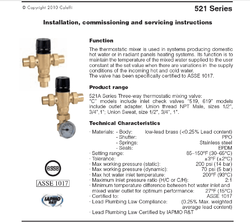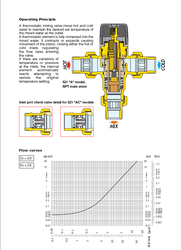I have a watts mixing valve that says 100 to 140 deg. It will allow what ever temp water I have In and can be reduced by 40 deg. So If I have 180 F water I can mix It to 140 F . Is this valve made for 140 F water max or is it just not working right ? I wanted to use it for a radiant floor but thats to hot.
Mixing valve question
- Thread starter woodsmaster
- Start date
-
Active since 1995, Hearth.com is THE place on the internet for free information and advice about wood stoves, pellet stoves and other energy saving equipment.
We strive to provide opinions, articles, discussions and history related to Hearth Products and in a more general sense, energy issues.
We promote the EFFICIENT, RESPONSIBLE, CLEAN and SAFE use of all fuels, whether renewable or fossil.



